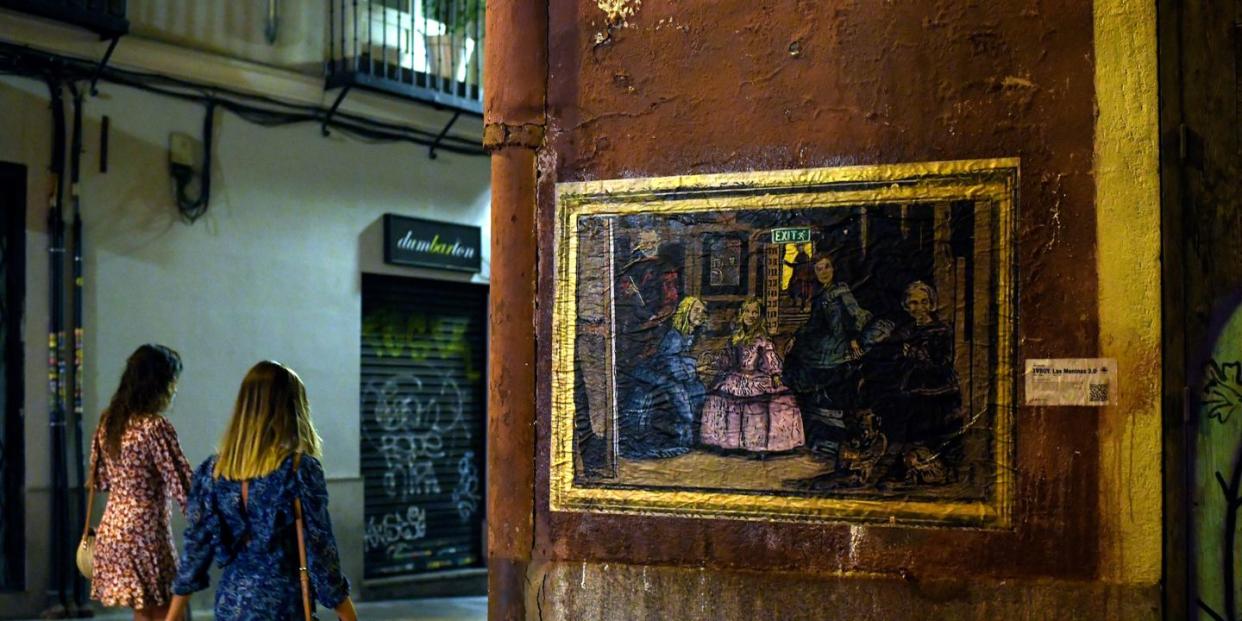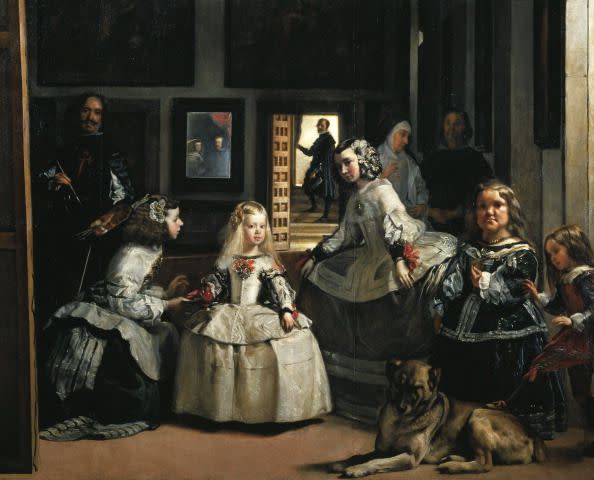Losing Control at The Prado

- Oops!Something went wrong.Please try again later.
For years, one of my favorite things to ask on a first date was, “When was the last time you cried?” The answer illuminated so much about the person without making them feel too vulnerable. I liked to catch them off guard and wield a little power—a playful provocation to see how they’d fare. I always knew my own answer to any question I posed to someone else and could easily toss out a pithy remark without much effort. My friends often call me unflappable. I’m not easily swept up—I avoid sentimentality and whimsy as a consequence for having “grown up too fast.” Meanwhile, these men’s answers varied, somewhere between five years ago to just the other day. The reasons were often about their mothers, break-ups, grief. Then once, at an ungodly hour in the morning, on a date with a photojournalist, he replied, “I was moved.” He had been at a gallery looking at black-and-white photographs and found them so beautiful he began to cry. The answer intrigued me, and I brought it up over dinner with friends. With each mention, I began to realize that I was envious—I wondered when I was last moved.
To be moved requires a certain way of looking—to let go of being self-possessed and open yourself up to the adverse effects of beauty. I’ve spent several years trying to soften. I had set up an intricate structure to allow me to live the kind of life I wanted, even though I knew its foundation was brittle. The possibility of losing control terrified me. A single loose brick and it was bound to collapse. There are many things you can’t do while protecting this kind of structure, mainly, and perhaps most importantly, fall in love. In a close second, it’s experiencing art and all its implications. The best, and most complete, way to undergo both love and art is to let them wash over you.
I did not come to this conclusion alone. Over the past eight years, I experienced a haunting that followed me from city to city, encouraging this transformation. I share this particular ghost with decorated company. Scholars, philosophers, and critics have lost years to this haunting.

I was introduced to Las Meninas in passing, during a conversation with an old flame. While in London, we walked through The Wallace Collection and he stopped abruptly, pointing to a small painting hung near the ceiling, almost indistinct against the smattering of works it was displayed among. It was a portrait of a little girl in a silver dress with pale, almost moonlit skin with a pink bow in her blonde hair. It was as though he was taken by surprise, “The Infanta.” He later spun a half-baked story that the Spanish princess in the portrait succeeded her parents’ throne and became an adolescent queen, immortalized as a child in Diego Velázquez’s 1656 masterpiece, Las Meninas. I found out on my own that most of this history he confidently extolled was untrue, but still, the figure of the little girl lingered in my mind. I imbued a sense of power and foreboding represented by this small child. There was something in her idealized beauty and youth that was a reminder of the old guard’s mortality. To me, she posed a threat to all that promised. I neglected the truths of her life—married off to her cousin who would be the Holy Roman Emperor and dying at age 21.
The summer after graduating college, I took a trip to Spain with my best friend and spent an afternoon in Madrid. To steal away from the heat, we stopped into the Museo del Prado. I skipped past the Rubens and Tintorettos, pausing just once to see Saturn Devouring His Son. I had but one reason for going to the Prado, and it lived in Room 12. I had an awareness of the scholarship on the painting. Michael Foucault wrote an entire essay devoted to it, and painted studies had been done throughout history by the likes of Salvador Dalí and Pablo Picasso. I abandoned my friend by the Titians and dutifully followed the brochure’s map. Against the forest green walls of the museum, a small crowd hovered in front of the crown jewel of the Prado, Las Meninas.
The canvas was unexpectedly large and stood at around 10 by 9 feet. At eye level, I reached the height of only the Infanta’s skirt. Though millions of people passed through this room, standing at the foot of Las Meninas had an intimate feeling, one of being an intruder in a moment in time. My little Infanta was ensconced by unfamiliar figures. Ladies-in-waiting, court dwarves, Velázquez himself, and, deeper in the painting, the king and queen reflected in a mirror. The Infanta wore the same dress I had seen in the small Velázquez portrait at The Wallace Collection. The only figure fully bathed in light, she is auspicious and majestic.
As I moved closer toward Las Meninas, the details of the painting began to dissolve into specks of pigment and gestures of the brush. What was a fleshed-out, sprawling scene disappeared into mist under closer inspection. But when I drew backward, the scene returned to focus. I was viewing the artist who looked back at me, past his canvas. Me, suddenly his subject. Looking at Las Meninas felt uncanny; it made me feel unnerved and disconcerted, but I was still drawn in. As Foucault wrote of the painting, “The observer and the observed take part in a ceaseless exchange.” My own exchange broke only when my friend came to collect me, so we could make our train out of Madrid.
Years passed and as I was walking down a street in Toronto, a collection of books on the sidewalk. I stopped to browse and picked up a yellow-and-red cover, a guidebook to the Prado from 1962. In it, as chance would have, the book fell open to the page that was bookmarked by an original ticket for entry. A postcard-sized, black-and-white reproduction of Las Meninas appeared. In this new form, it looked more like a photograph, or a wide shot in cinema. This one painting showed the possibilities of art and foretold other mediums that had yet to be invented. As a novelist, to capture life with even a thread of authenticity, you must accept that even in a fictional world, each person you come across has their own distinct perspective. Where Las Meninas succeeds is the equal weight it gives to its cast of characters, as Foucault describes as a “complex network of uncertainties, exchanges, and feints.” A fully fleshed world is a collaboration of personalities—each character has a role. It’s the subtleties of how that is expressed that keeps the audience returning to it. Looking at the postcard of Las Meninas was the first time I had noticed the dwarf’s foot provoking the dog in the lower right-hand corner. Suddenly, an air of mischief that was always present revealed itself to me only in that moment, years after initial contact. This became an aim in my work: to leave people wanting more and have them return to it with new eyes. I realized that this was the reason so many scholars gave in to this ghost; they were confounded by the painting’s virtuosity and would devote themselves to unraveling it.

Like clockwork, Las Meninas continues to haunt me. Each time it appears, it is when I am falling into old habits. Skating on the surface of beauty and pleasure but hardened to anything that might set me aflame. It is a reminder that to be moved in life (love and art included), you must open yourself up to the uncanny. And from my intricate structure, I step outside its canvas and flirt with demolition.
You Might Also Like

